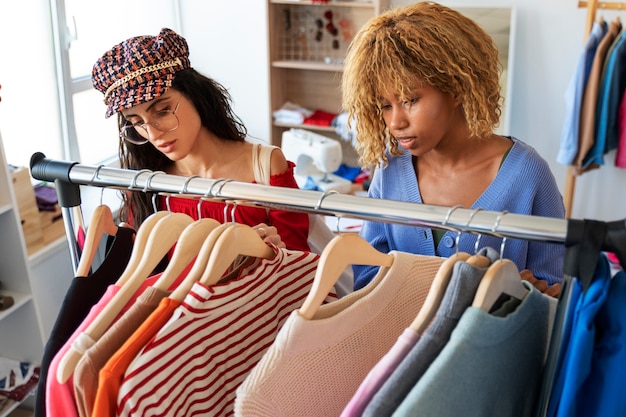Ethical fashion brands are rapidly gaining attention as consumers become more conscious about the impact their clothing choices have on the environment and society. In 2025, these brands are not just trends but a movement toward sustainable, responsible, and transparent fashion. This shift reflects a growing desire for clothing that respects people and the planet. From fair labor practices to eco-friendly materials, ethical fashion brands are redefining what it means to be stylish in today’s world.
Understanding What Makes a Brand Ethical
When we talk about ethical fashion brands, it means companies that prioritize more than just profits. They focus on fair wages, safe working conditions, and minimizing environmental harm. This ethical approach covers the entire supply chain — from sourcing raw materials to manufacturing and shipping.
Take Patagonia, for example, a well-known ethical fashion brand that has built its reputation on environmental activism and transparency. Patagonia uses recycled fabrics and donates a portion of its profits to conservation causes, proving that fashion can be both stylish and responsible.
Another brand leading the charge is Stella McCartney, a luxury designer famous for her cruelty-free and sustainable collections. She avoids leather and fur, and emphasizes innovative materials that reduce environmental damage.
The Rise of Ethical Fashion Brands in 2025
The rise of ethical fashion brands is closely tied to changes in consumer attitudes. Millennials and Gen Z shoppers, in particular, are driving demand for brands that align with their values. Social media platforms have made it easier to expose unethical practices and promote responsible ones, accelerating this trend.
Brands like Everlane have gained popularity by openly sharing details about their factories and cost breakdowns. Their “radical transparency” approach builds trust and loyalty with customers who want to know exactly where and how their clothes are made.
In addition, advances in sustainable textiles such as organic cotton, hemp, and recycled polyester have allowed ethical fashion brands to produce high-quality products without relying on harmful materials. This innovation supports a circular fashion economy where waste is minimized.
How Ethical Fashion Brands Impact Communities
Ethical fashion brands often partner with artisan communities and cooperatives, creating fair employment opportunities. This not only preserves traditional crafts but also empowers marginalized groups.
For example, the brand People Tree works closely with fair trade producers, ensuring workers receive fair pay and work in safe environments. By supporting such brands, consumers contribute to positive social change.
Furthermore, many ethical brands invest in local communities by funding education, healthcare, and infrastructure. These efforts demonstrate that fashion can be a force for good beyond just environmental concerns.
The Challenges Ethical Fashion Brands Face
Despite their positive impact, ethical fashion brands face challenges in scaling up while maintaining integrity. Producing sustainable materials can be more costly and time-consuming, which sometimes leads to higher retail prices.
Consumers who are price-sensitive may hesitate to switch from fast fashion to ethical alternatives. However, education around the true cost of cheap clothing is increasing, encouraging more people to consider quality over quantity.
Additionally, the complexity of global supply chains can make it difficult to verify ethical claims. This has led to the rise of certification programs such as Fair Trade, GOTS (Global Organic Textile Standard), and B Corp, which provide credibility.
How Consumers Can Support Ethical Fashion Brands
Supporting ethical fashion brands requires intentional shopping habits. Prioritizing brands that disclose their practices, use sustainable materials, and ensure fair labor standards is key.
People interested in sustainable fashion can start by exploring collections from brands like Patagonia, Stella McCartney, and Everlane. They can also extend the life of their clothing through repairs, second-hand shopping, and recycling.
Small lifestyle changes, such as buying fewer but better-quality items, can collectively create significant demand for ethical fashion. This encourages brands to continue innovating and prioritizing responsibility.
The Future Outlook for Ethical Fashion Brands
The future of ethical fashion brands looks promising as awareness and innovation continue to grow. Governments and international organizations are also starting to regulate environmental and labor practices more strictly.
Technological advancements, including blockchain for supply chain transparency and lab-grown fabrics, will further support the credibility and scalability of ethical brands.
As consumers increasingly seek authenticity and impact in their purchases, ethical fashion brands will not just survive but thrive, shaping the fashion industry toward a more sustainable and humane future.
Learn More:
houston rockets vs golden state warriors match player stats
lakers vs sacramento kings match player stats
lakers vs new orleans pelicans stats
lakers vs golden state warriors match player stats
